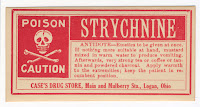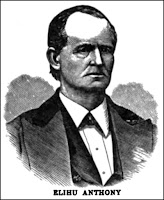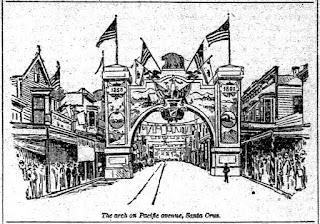1854: From the account told by John Schultheis in 1892.
Charles McKiernan and his friend Taylor were hunting for
game on foot in the Santa Cruz
Mountains. They successfully
killed two deer and, since they had no horses to bring back their kill, they
hung them in a tree. Close to sunset they saw a large grizzly feeding in the
wild oats. McKiernan saw the bear first and said to Taylor: “See that big bear; now if we can kill
him I consider we will have done a good days work.”
They started for a clump of oak trees to get a better shot
at the bear and to climb if escape were necessary. It is likely that the blood
on their hands from the deer was smelled by the grizzly as they can detect
smells over a mile away.
 |
| Mountain Charley by Ralph Rambo |
The grizzly charged, mouth open. Both men fired but their
shots failed to kill the bear who charged at McKiernan. He hit the bear so hard
in its ribs with his rifle that it bent the barrel leaving it useless. The bear
rose on its haunches and bit McKiernan in the head through his right eye and
left temple. He raised his arm to deflect a second bite and the bear bit his
lower arm.
The bear then started for Taylor, who ran for his life. Taylor's dog ran between
him and the bear. Taylor
fell flat in the oats which hid him. The bear ran back towards McKiernan but
jumped over him and ran into the woods.
Taylor
returned to McKiernan, bandaged his head with his shirt, and left him with his
revolver while he went to find a horse to transport McKiernan home.
Taylor
reached McKiernan's house just as our storyteller, Schultheis, was arriving.
He, Taylor, a gentleman from Tennessee
and his man servant, along with a mule and a blanket went back for McKiernan.
 |
| Charles McKiernan by Andrew P. Hill |
Schultheis then rode down to San Jose to fetch Dr. Bell. It was sunrise
before they arrived back at Mountain Charley's. Dr Bell examined the wound a
decided to cover the exposed brain with a metal plate.
The plate was fitted but
after several weeks the wound did not heal. A visiting doctor from Santa Cruz examined
McKiernan and advised removal of the plate which, having not been pure metal,
had turned black and poisoned the wound.
After this the wound did heal but McKiernan suffered
terrible pains. It wasn't until several years later, after consulting with a
group of physicians, that the wound was reopened. The cause of the pain was discovered
to be a clump of hair.
 |
| Osage City Free Press July 11, 1879 |
Though disfigured for life, McKiernan
lived for 38 years after the gruesome attack.































